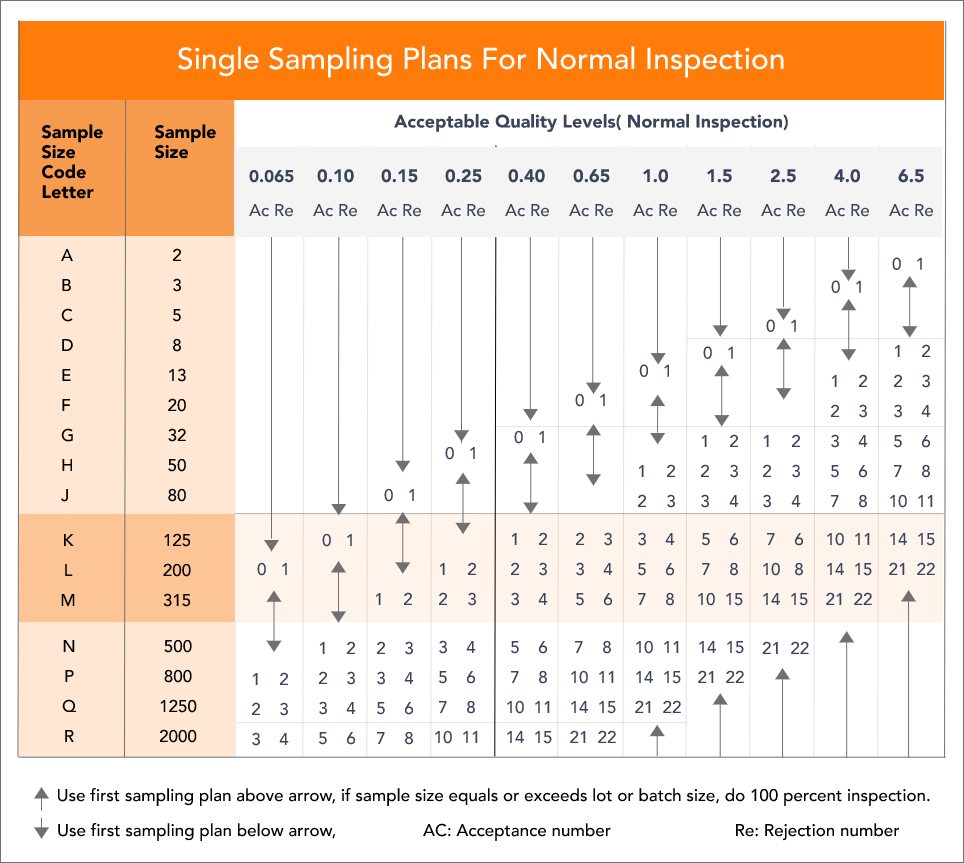The acceptable quality limit (aql) is a fundamental measure of standards used to conduct product inspections. In line with iso 2859-1, it refers to the lower limits of acceptable standards for consumer products over the course of a number of inspections. At global inspection managing, we use aqls to determine whether or not a product order has met a client’s specifications.
AQL standards are helpful in that they can be used to find two very important figures. These include the number of units that need to be inspected in a given shipment and the number of defects that will produce a ‘fail’ result. The number of units that are inspected is called an ‘inspection sample’ to determine the sample size needed for an individual shipment, organizations can use the aql chart, which is made up of two tables.
These defects are dangerous to consumers and, in line with current compliance regulations, should not exceed 0%.
These affect a product’s function or significantly affect its appearance. The limit is 2.5%.
These do not limit the use of a product but could still affect sales. The limit is 4%.
The AQL chart can be used to determine how many defects are permissible during an inspection, as well as how many units should be inspected. If you are unfamiliar with the AQL chart, our inspectors will help you to select the AQL level that best fits your requirements.

The first table (shown below) can be used to select what is known as the "General Inspection Level", of which there are three levels of requirement. Generally speaking, most companies select Level II, which is the standard for over 95% of inspections. The defect level must then be determined using the second table (also shown below), which uses a scale that ranges from 0 to 6.5.
As already mentioned, Table 1 features three General Inspection Levels (I, II, and III) that determine how many units should make up a random sample. As a general rule, companies should select Level II as standard. By selecting Level I, your inspector would examine fewer units. Although this may not be as costly in the short term, it may cost you more in the long term due to issues with quality.
A situation in which Level III needs to be used could include, for example, a new factory experiencing a series of failures related to quality control. This level will increase the sample size that the inspector will examine, making the results more accurate.

You may have noticed that the second column on Table 1 features four so-called ‘Special Inspection Levels’. Selecting one of these levels will lead to a smaller sample being examined.




Answers to some of the most common questions & concerns.

